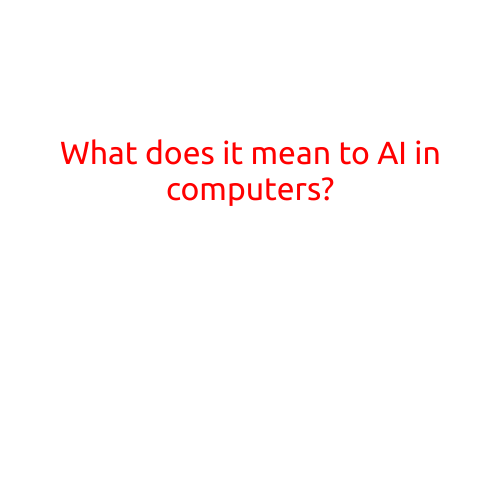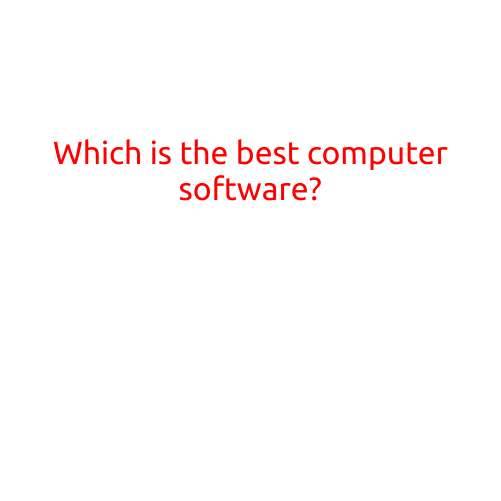
What Does it Mean to AI in Computers?
Artificial Intelligence (AI) is a term that has been increasingly mentioned in recent years, especially with the rise of technological advancements in the field of computer science. But what exactly does AI mean in the context of computers? In this article, we will delve into the meaning and significance of AI in computers.
What is Artificial Intelligence?
Artificial Intelligence refers to the development of machines or computers that can perform tasks that typically require human intelligence. This includes tasks such as:
- Learning
- Problem-solving
- Reasoning
- Perception
- Language processing
In other words, AI enables computers to think, learn, and act like humans. This is achieved through the use of algorithms, data analysis, and machine learning techniques.
Types of Artificial Intelligence
There are several types of AI, each with its own unique characteristics and applications. Some of the most common types of AI include:
- Narrow or Weak AI: This type of AI is designed to perform a specific task, such as playing chess or recognizing faces. It is programmed to perform a specific set of instructions and is not capable of general reasoning or learning.
- General or Strong AI: This type of AI is capable of performing any intellectual task that a human can. It is able to reason, learn, and make decisions on its own, without the need for human intervention.
- Superintelligence: This type of AI is exponentially more intelligent than human-level AI. It is able to learn and adapt at an incredible rate, making it potentially capable of solving complex problems and making decisions that are beyond human capabilities.
Applications of Artificial Intelligence in Computers
AI has a wide range of applications in computers, including:
- Natural Language Processing: AI can be used to enable computers to understand and generate human language. This has led to the development of chatbots, virtual assistants, and language translation software.
- Image Recognition: AI can be used to enable computers to recognize and identify images, such as objects, faces, and emotions.
- Robotics: AI can be used to enable robots to perform tasks that typically require human intelligence, such as navigating, recognizing and responding to commands, and making decisions.
- Predictive Analytics: AI can be used to enable computers to analyze large amounts of data and make predictions about future events.
Benefits and Challenges of Artificial Intelligence in Computers
The benefits of AI in computers are numerous, including:
- Increased efficiency and productivity
- Improved accuracy and decision-making
- Enhanced capabilities for multitasking and problem-solving
However, there are also several challenges associated with AI in computers, including:
- Job displacement: AI has the potential to displace many jobs, especially those that are repetitive or routine.
- Bias and fairness: AI systems can perpetuate and amplify biases that are present in the data they are trained on, leading to unfair outcomes.
- Security and trust: AI systems can be vulnerable to cyber attacks and other forms of malicious activity, leading to concerns about security and trust.
Conclusion
In conclusion, AI in computers refers to the development of machines or computers that can perform tasks that typically require human intelligence. AI has a wide range of applications in computers, including natural language processing, image recognition, robotics, and predictive analytics. While there are many benefits to AI, there are also several challenges associated with its implementation, including job displacement, bias and fairness, and security and trust. As AI continues to evolve, it is essential that we address these challenges and ensure that AI is developed and used in a responsible and ethical manner.





